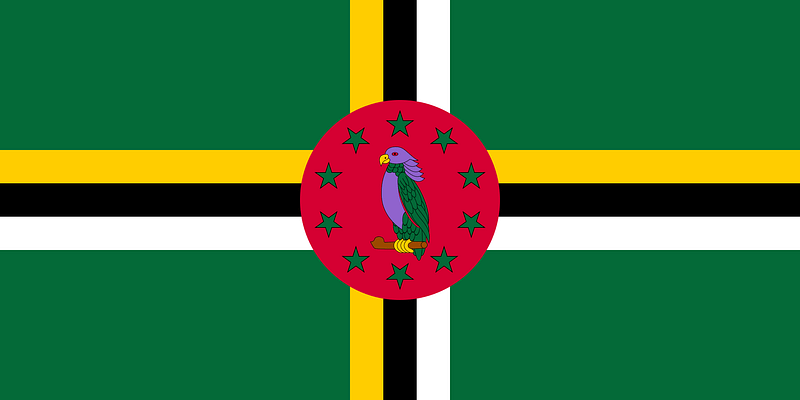This travel wiki page of Dominica will help guide travelers with quick and relevant information to consider when planning and visiting the country. It is difficult to find all the pertinent information on Dominican culture, safety, travel restrictions, and things to do, so we summarize it all here. If anything is stale or outdated, please let us know! Let’s dive in and explore more high-level information as a Dominica trip planner.
Last updated April 7th of 2024.
Table of contents
National Information & Culture
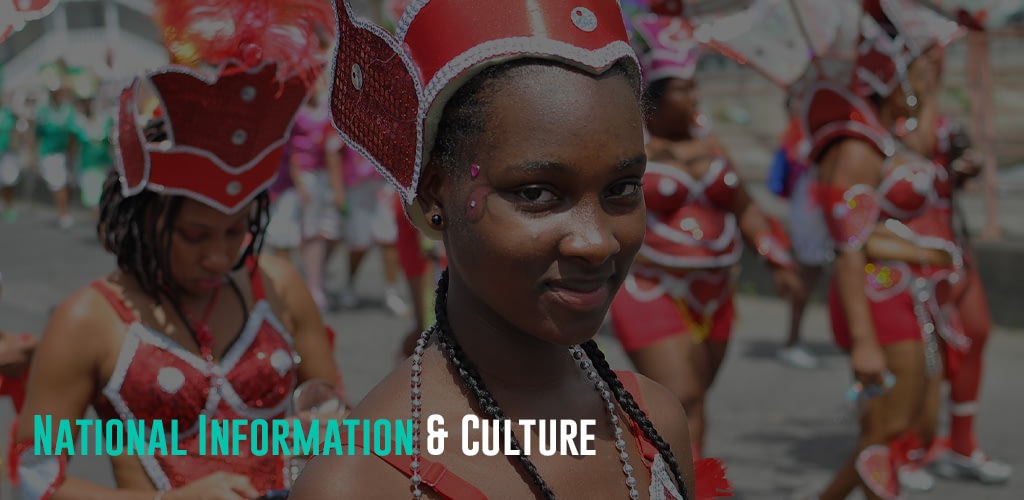
Dominica, officially the Commonwealth of Dominica, is the youngest island country in the Lesser Antilles archipelago in the Caribbean Sea. The country’s closest neighboring islands are Guadeloupe to the northwest and Martinique to the southeast, an overseas France department. Meanwhile, Dominica’s capital is Roseau, and the official currency is the East Caribbean Dollar (XCD).
Considered the most forested island in the Caribbean, Dominica is nicknamed the “Nature Island of the Caribbean” for its natural environment. The country has lush rainforests and is home to numerous rare plants, animals, and bird species, including the Sisserou parrot, also known as the Imperial Amazon. Dominica is still formed by geothermal volcanic activity. Also, geothermal vents and natural hot springs bubble throughout the island, a testament to Dominica’s volcanic origins.
Dominica’s rich culture is a fascinating blend of influences. African, European (British and French), and Kalinago (also Carib) traditions have all shaped the island’s unique identity. Dominica is notably home to the Caribbean’s only remaining Kalinago people, the island’s indigenous inhabitants. These descendants of the pre-Columbian inhabitants have preserved their way of life for centuries.
Dominicans are known for their friendliness and laid-back nature. When interacting with locals, respecting their customs and traditions is essential. Dress modestly when visiting churches or attending cultural events, and always ask permission before taking photographs of individuals or their property. Additionally, greeting elders with a handshake or nod is customary as a sign of respect.
Visit Dominica’s official tourism website for more information and trip planning.
Special Travel Considerations
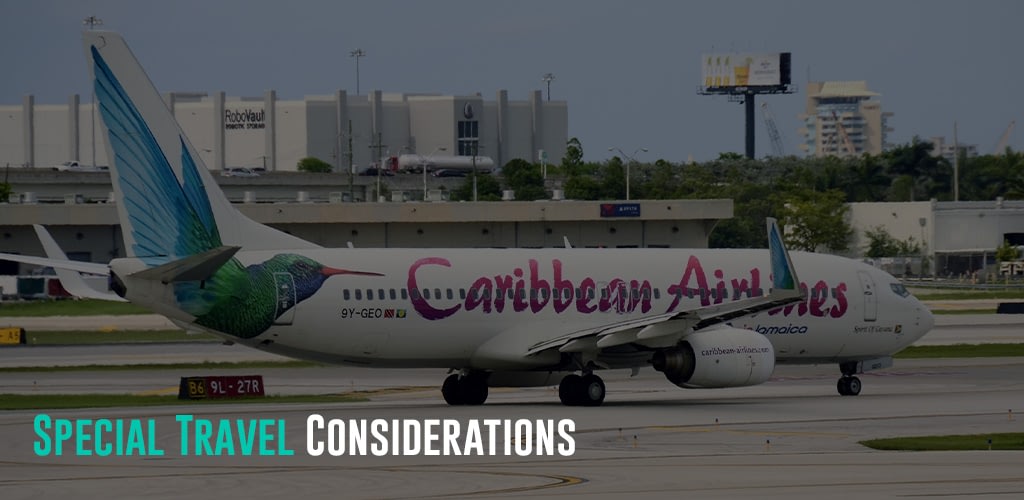
Each country and destination has rules and regulations that every traveler must consider. Hence, please consider the following factors for hassle-free travel to Dominica.
Covid-19 Policy
There are no COVID-19 testing or vaccination requirements for travelers entering Dominica. Similarly, travelers do not need to quarantine upon arrival.
Travel Insurance
Travel insurance is not mandatory when entering Dominica. However, it is advisable to have one that covers emergency medical treatment, including COVID-19, repatriation, and evacuation. Travel insurance can protect you against the inconvenience of injury, medical emergencies, theft, and flight cancellations. In addition, it is comprehensive protection in case anything goes wrong with your trip.
Visa Information
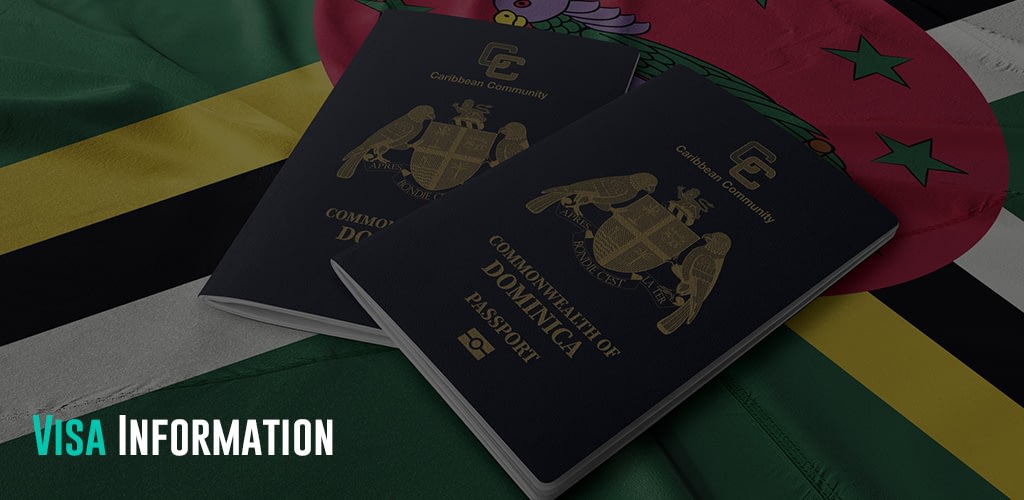
Visitors from visa-exempt countries do not need a visa to Dominica and can stay for tourism from 21 days to 6 months, depending on the country of their passport. Meanwhile, nationals from visa-required countries must submit their application forms, requirements, and visa fees to the nearest Dominica Consulate. For more details, visitors can verify all entry conditions according to their nationality through the Dominica government portal and the Ministry of National Security and Legal Affairs.
In addition to a visa, visitors to Dominica must have at least six months of valid passports. They must also have proof of return or onward travel, hotel accommodation, and proof of economic means.
Popular Attractions
Dominica is nicknamed “The Nature Island” in the Caribbean. It is a unique gem that lives up to its name with its lush rainforests, dramatic volcanic peaks, cascading waterfalls, and pristine coastline. So, nature lovers will find paradise in Dominica’s unspoiled landscapes!
Morne Trois Pitons National Park
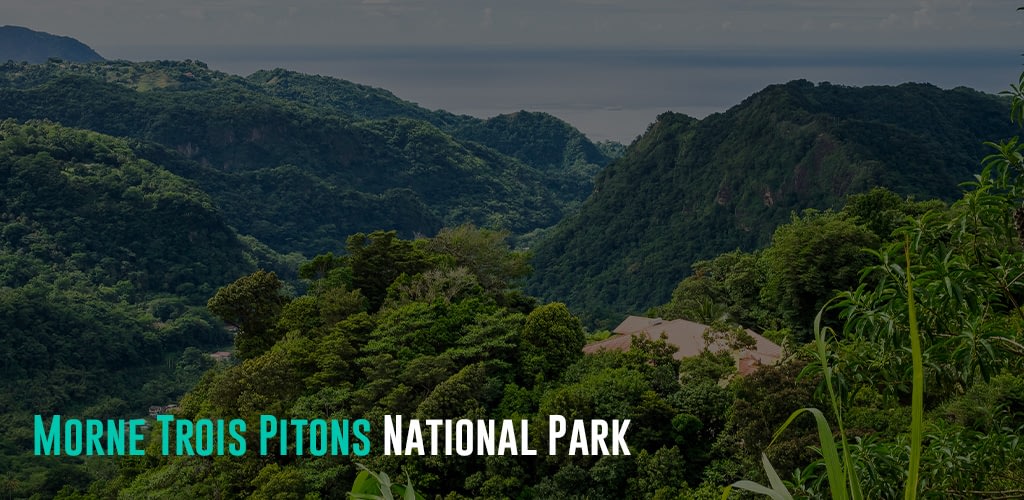
Morne Trois Pitons National Park, a UNESCO World Heritage Site, is a haven of untouched wilderness nestled in the heart of Dominica. The park boasts natural wonders encompassing rainforests, majestic peaks, and cascading waterfalls, offering a paradise for intrepid travelers seeking adventure. With this, travelers can explore several key attractions, including the Boiling Lake, the Emerald Pool fed by Middleham Falls, Titou Gorge, and the otherworldly Valley of Desolation.
Morne Trois Pitons National Park visitors can engage in various activities to explore its diverse terrain. Hiking trails wind through dense jungle, leading to breathtaking viewpoints and hidden gems. Travelers can also swim in the jade-green waters of Titou Gorge for a refreshing experience or marvel at the bubbling mud ponds and hot springs of the Valley of Desolation for a more dramatic landscape. Moreover, Moeri Lake and Freshwater Lake offer idyllic spots for picnics or birdwatching. Meanwhile, for travelers seeking tranquility, the park’s serene lakes provide the perfect setting for relaxation and reflection.
Another perk is the park’s accessibility from the village of Laudat, just 11 kilometers from Dominica’s capital, Roseau.
Boiling Lake
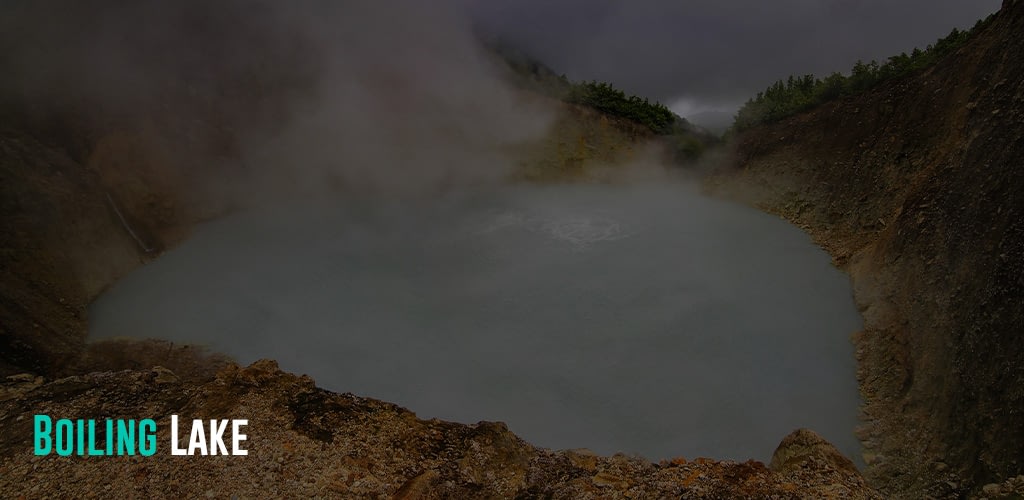
Dominica’s Boiling Lake is the world’s second-largest hot lake. With its 200 feet wide, Boiling Lake resembles a bubbling cauldron of grayish-blue water constantly heated by volcanic activity.
The lake is strategically located within the Morne Trois Pitons National Park, a UNESCO World Heritage Site. Thus, travelers can hike through the park to reach a viewing platform for a dramatic lake perspective. This challenging hike is best done with a guide who can navigate the trails and share the island’s rich volcanic history.
Notably, the lake maintains a temperature of ∼90°C. Hence, swimming in the Boiling Lake is strictly prohibited. However, its surrounding area offers refreshing waterfall dips and geothermal mud baths—a unique way to unwind after your adventure!
Trafalgar Falls

Just a 20-minute drive from Roseau lies one of Dominica’s most iconic natural wonders—Trafalgar Falls. Named for the famous naval battle of Trafalgar, these twin waterfalls, affectionately known as Mother and Father, are a must-visit destination for travelers seeking adventure and tranquility amidst lush rainforest scenery. The larger of the two falls boasts a 65-meter drop, while the smaller offers a more welcoming bathing pool for those daring enough to scramble down.
A brief 10 to 15-minute walk along a well-maintained path leads visitors to the viewing platform, which offers panoramic views of both falls. Travelers can also pause and take in the warm spring flowing across the trail route. Moreover, travelers with more adventurous souls can continue swimming in the smaller waterfall or seek out the hot springs near the base of the tallest fall. Trafalgar Falls offers a perfect blend of relaxation and exhilaration, with opportunities for leisurely exploration and invigorating dips.
Emerald Pool
At the northern end of Morne Trois Pitons National Park, Emerald Pool is one of Dominica’s must-visit attractions. Specifically, it is strategically located along the Waitukubuli National Trail Segment 5 or the Maroon Trail. Moreover, it is accessible just 10 minutes off the interior of Roseau-Castle Bruce Road, providing a cool reprieve for swimmers and hikers on hot days. Emerald Pool is a 40-foot waterfall that cascades into a green pool under filtered sunlight.
Titou Gorge
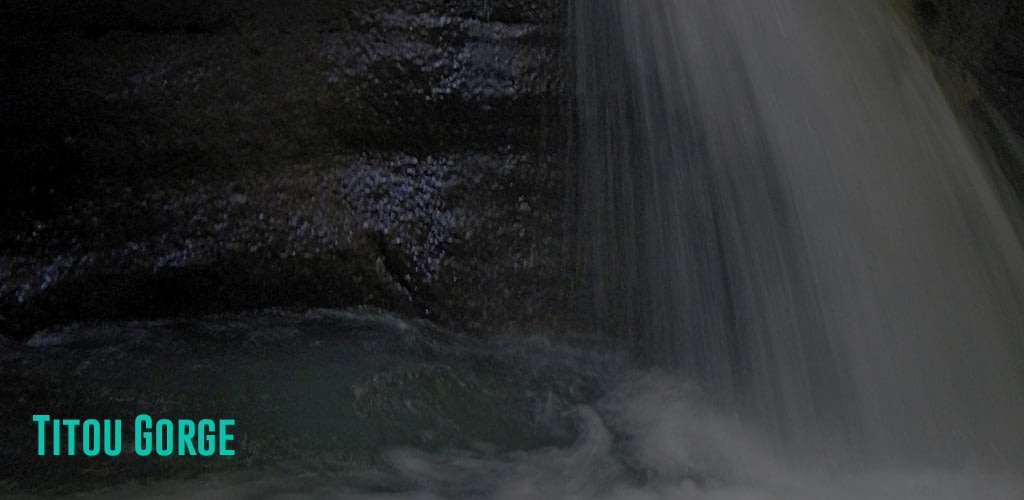
Titou Gorge, meaning “little hole” in Creole, is a captivating swimming spot in Laudat, Dominica. Famous for its appearance in Pirates of the Caribbean, Titou Gorge offers a brief yet thrilling aquatic adventure. This natural wonder invites visitors to embark on a short swim through a series of “rooms and ponds” formed by towering cliff walls, creating a magical experience amidst lush vegetation. Additionally, steep vine-clad lava walls enclose the gorge, creating an ethereal ambiance as sunlight filters through the canopy above. Swimmers can also enjoy the refreshing emerald waters and, for the more adventurous, discover a small waterfall.
Champagne Reef

In Dominica’s southwest, Champagne Reef is a mixed black sand and rock beach famous as a snorkeling and diving destination. Its colorful reef and submerged volcanically active fumaroles produce bubbling waters rising from volcanic thermal springs on the ocean floor, attracting diving and snorkeling enthusiasts worldwide. The reef’s plummeting cliffs and towering volcanic formations are home to a vibrant marine ecosystem. From colorful sponges like pink azure, red rope, yellow tube, and purple vase to graceful crinoids, Champagne Reef is teeming with life.
Moreover, Champagne Reef is home to diverse marine creatures, including octopuses, rays, trumpetfish, parrotfish, frogfish, batfish, seahorses, and hawksbill turtles. Diving into the reef can also lead to the remains of a 17th-century Spanish shipwreck, adding a touch of intrigue to your underwater journey.
Cabrits National Park

Cabrits National Park on the northwest peninsula comprises tropical rainforests, coral reefs, and wetlands. The park is dominated by two low-rising extinct volcanic peaks, East Cabrit and West Cabrit. Meanwhile, the park’s coastal area is designated a marine reserve.
Travelers can hike through forest trails and jungle terrain with sweeping Caribbean views. Along the way, hikers can enjoy birdwatching and ample photography opportunities. Travelers can also explore the fascinating ruins of 18th-century Fort Shirley, a military garrison guarding the island, with panoramic Prince Rupert Bay views. Additionally, travelers can learn about Dominica’s colonial history from the little museum at Fort Shirley’s entrance.
After a day of hike and exploration, travelers can cool off by snorkeling or diving the vibrant coral reefs teeming with marine life, including sea turtles and tropical fishes.
Roseau
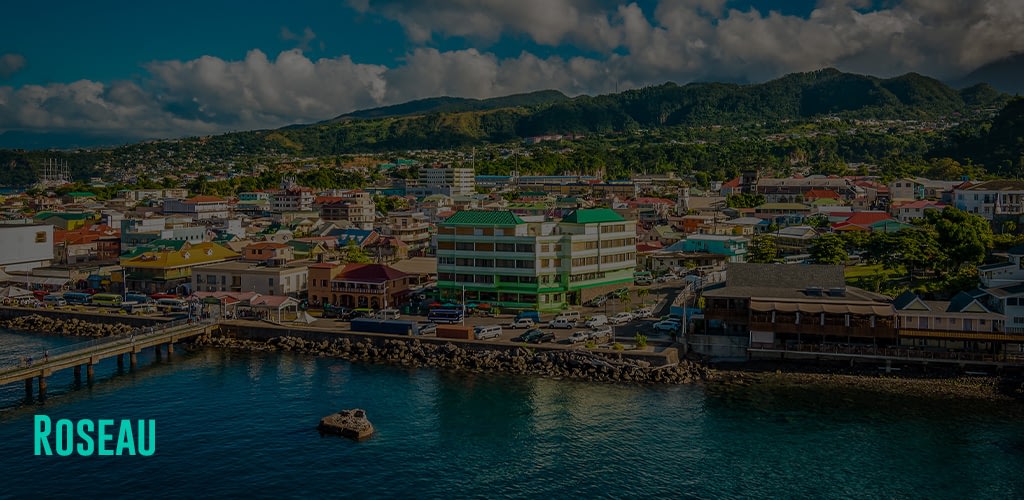
Roseau, Dominica’s capital city, is a quaint town with 18th-century French architecture easily explored on foot. The Caribbean Sea, Roseau River, and Morne Bruce surround the town. Furthermore, Roseau is built on the ancient Kalinago Indian Village.
One of the notable sites in Roseau is the Old Market Square, formerly the slave market, which is now a vibrant craft vendors market. Travelers can also visit the Dominica Museum to glimpse the island’s past. Across the museum is the Roseau Cruise Ship berth. To taste local life, explore the New Market on the Riverbank, brimming with fresh tropical produce. Climb Morne Bruce for panoramic views of the city and explore historic landmarks along Victoria Street, including the Fort Young Hotel, Anglican Church relics, the President’s Office, Carnegie Library relics, the Cenotaph, and the slave monument.
Scott’s Head Peninsula
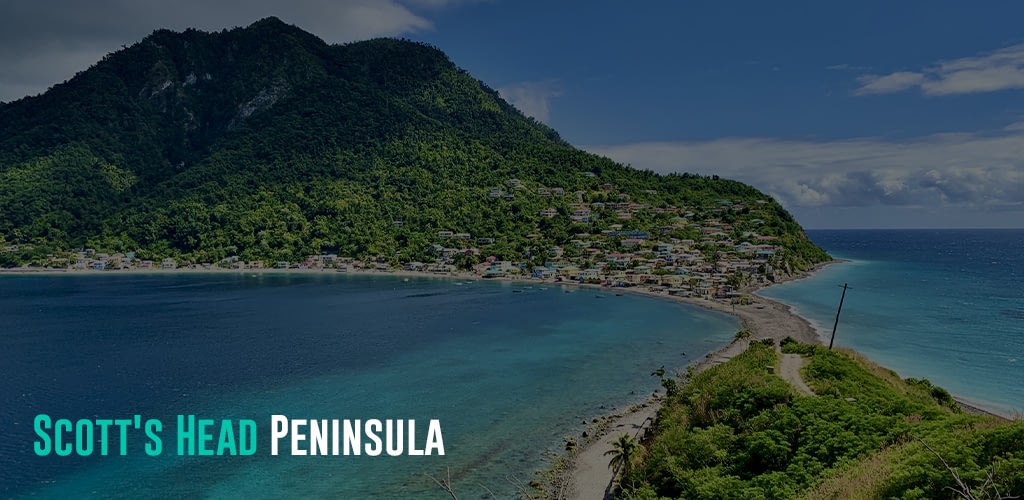
Scott’s Head, located on Dominica’s southwest coast between the Atlantic and Caribbean Sea, is a diver’s dream destination. Protected as the Soufrière Scott’s Head Marine Reserve, the bay boasts diverse marine life, including sperm whales, making it a top dive site recognized by UNESCO. Just an hour’s drive from Roseau, this charming village offers access to Soufrière Bay, renowned for its exceptional diving and snorkeling experiences. Divers can explore Soldierfish Cave with its vibrant coral reefs teeming with marine life, including black bar soldierfish and colorful gorgonians.
Hikers can also enjoy stunning vistas from the peninsula’s peak, the starting point of the Waitukubuli National Trail. In summer, visitors can attend the annual feast honoring Saint Peter and immerse themselves in local culture. The village’s rich history, from colonial remnants to slave trails, adds depth to its allure.
Kalinago Territory

Nestled on the island’s eastern side, Kalinago Territory is home to the indigenous Kalinago people. This enclave is a living testament to Dominica’s indigenous heritage and offers a glimpse into their ancient way of life. Originally known as the Caribs, the Kalinago represent the last remaining group of the pre-Columbian Carib Indians, dating to about 3000 B.C.
Visitors to Kalinago Territory can learn traditional crafts like basket weaving, canoe building, pottery, and wood carving. They can also savor communal meals made from natural ingredients. Guided tours led by Kalinago guides include hiking along the Asulukati River to discover waterfalls and climbing Kabet’s peak for stunning views.
Primary Spoken Language(s)
English is the official language of Dominica. However, many people speak Dominican Creole, which is based primarily on French and a mix of West African indigenous languages. A few northern villages use a distinctive English dialect called Kokoy.
Safety Concerns
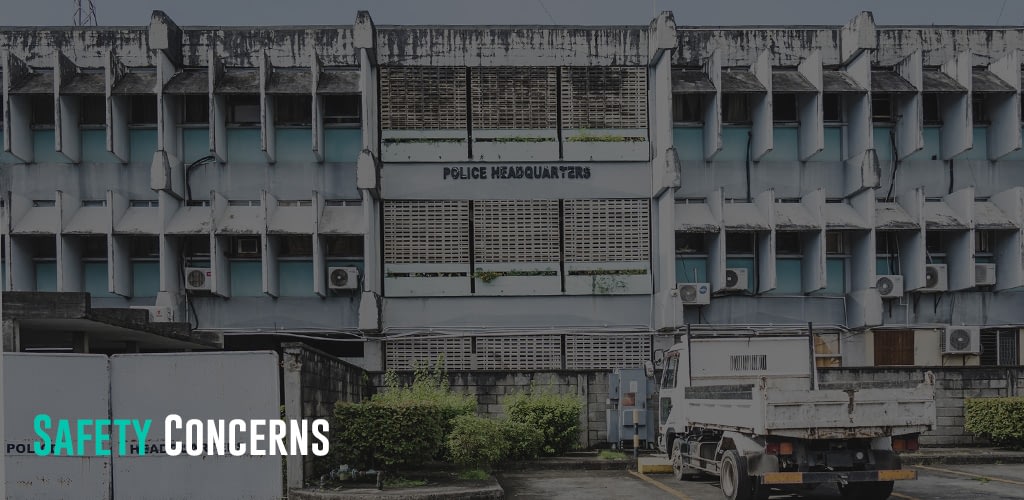
Dominica is a safe destination for travelers and enjoys one of the lowest crime rates in the Caribbean. As of July 17, 2023, Dominica has a Level 1 Travel Advisory from the US Department of State. Hence, travelers can exercise standard precautions in the country. However, visitors are still encouraged to practice common sense in their deportment and protect their property.
Crimes of opportunity like petty theft and pickpocketing can still occur. So, keep valuables, cell phones, and jewelry out of sight. Do not wear flashy items or leave valuables unattended on the table, beach, or parked vehicles. Avoid unsolicited help from strangers and isolated areas on foot, especially at night.
In an emergency, dial the national hotline number 999 to request police, fire, and ambulance assistance.
Local Laws and Culture
It is illegal for anyone, including children, to dress in camouflage clothing in Dominica. Moreover, Dominica’s community is primarily conservative. Hence, avoid same-sex sexual activities. Be mindful of local attitudes and be aware that showing affection in public may attract unwanted and harmful attention.
Natural Hazard
Earthquakes and volcanic eruptions are risks in Dominica. The country has nine (9) active volcanoes, and tremors can be frequent. Therefore, travelers should be aware of the dangers they face if an eruption occurs and how to prepare for an eruption.
Dominica is susceptible to hurricanes like the rest of the Caribbean from June to November. Moreover, Dominica experiences storm surges, flooding, and landslides. Hence, remember to monitor the National Hurricane Center forecasts and the World Meteorological Organization warnings when traveling during this season. When planning your trip, it is also best to check Dominica’s Government Information Service and the Office of Disaster Management for local instructions, news, and updates.
Budget Considerations
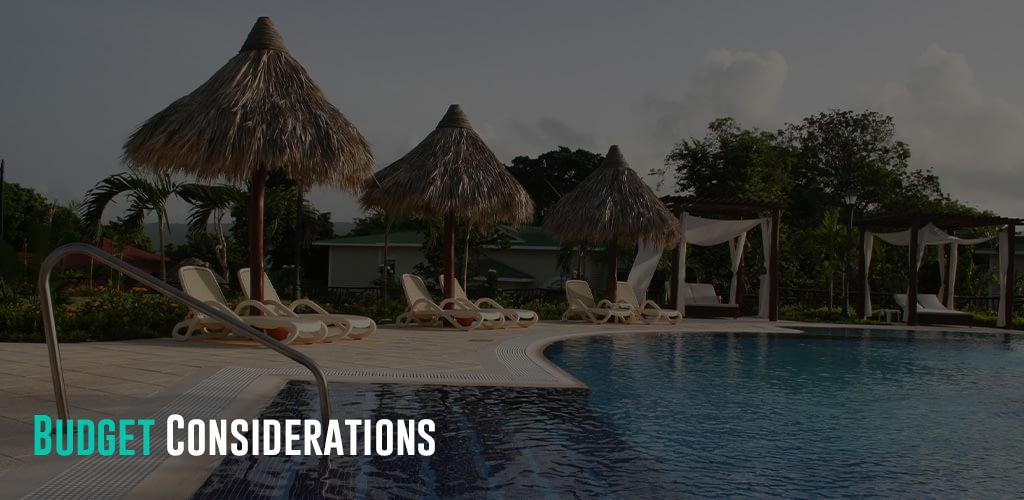
Dominica is known to be a moderately priced destination for travelers.
Accommodation
Accommodation costs take the most significant part of the budget for travelers to Dominica. There are only a few hostels, and a dorm bed costs around $30, while a private room in guest houses is available for $50. Travelers can also find budget hotels or an entire apartment for $80. For more comfort, visitors can stay in a 4-star hotel for $120 and a 5-star resort hotel for $550.
Food
Dominica has a rich culinary tradition influenced by African, French, British, and indigenous Kalinago cultures. Food staples include rice, root crops, seafood, and meat. Popular Dominican dishes include the callaloo sancocho, pelau, and accras.
For $7, travelers can eat traditional Dominican cuisine from cheap local restaurants. They can also have a fast food combo meal for $6 and enjoy street foods for less than $2. Meanwhile, dining at a mid-range restaurant costs at least $25 for a three-course meal.
Travelers who want to go grocery shopping and cook can expect to spend $60 weekly on basic staples like rice, fruits, vegetables, and meat or seafood.
Activities and Transportation
Admission fees to Dominica’s national park system and natural attractions are $5 for one site visit. The rate allows travelers to visit any of the following: Morne Trois Pitons National Park (Emerald Pool, Boiling Lake, Freshwater Lake, Boeri Lake, and Middleham Falls), Cabrits National Park and Fort Shirley, Morne Diablotin National Park and Syndicate Nature Trail, Indian River, Trafalgar Falls, and Soufriere Sulphur Springs. Meanwhile, travelers can visit all these sites for $12 for a one-week pass. While the National Park system user fee is inexpensive, visitors will most likely need to hire a guide at around $50 daily.
On the other hand, traveling by minibusses starts at $0.75 and $11 for taxis for short trips. For comfort, hiring a vehicle is possible at $53 per day.
Average Two-Week Cost
Budget travelers in Dominica can live with a $60 daily budget or $840 for two weeks. The budget covers the costs of staying in a hostel dorm bed, cooking most meals, and taking public transportation. In addition, travelers mainly do free beach activities and hiking in the parks.
Travelers can comfortably stay in a 3-star hotel on a mid-range budget of $170 daily or $2380 in two weeks. The budget also includes dining out at local restaurants, taking occasional taxis, and doing a few paid tours and activities.
Lastly, travelers can enjoy luxury in the Dominica from $280 daily to $3920 for two weeks. It includes staying in a four—or five-star hotel and beachfront properties, dining anywhere, vehicle rental, and all the paid tours and activities they want. So, for them, the sky is the limit for travel.
Customs And Import Restrictions

All travelers 18 years or older can bring personal effects free of duties to Dominica. They can also bring tobacco and alcohol products not exceeding the following:
- One liter of spirit or wine
- 200 cigarettes, 50 cigars, or 227 grams of tobacco.
- Gifts and souvenirs not exceeding $150 (EC$400).
Like most other countries, Dominica prohibits and restricts the importation of certain items. Below is a list of items that require permits from certain offices before entry:
- Arms and ammunition, gunpowder, blasting powder, detonators, and explosives of any description (including fireworks and firecrackers).
- Plants, plant parts, plant products, seeds, and other such regulated items
- Meat and meat products
- Pets and live animals
- Radio transmission apparatus, including V.H.F Radios
- Pesticides (insecticides, fungicides, herbicides, nematicides, rodenticides, acaricides, molluscicides
Moreover, Dominica prohibits entry of the following goods and products:
- Counterfeit coins
- Fictitious stamps
- Food unfit for human consumption
- Indecent or obscene articles (pornography)
- Infected animals
- Pistols in the form of stylographic pens or pencils
- Any goods bearing the Coat of Arms of Dominica
For further information, please visit Dominica’s Customs and Excise Division portal for customs policies and import and export restrictions lists.
Climate Considerations
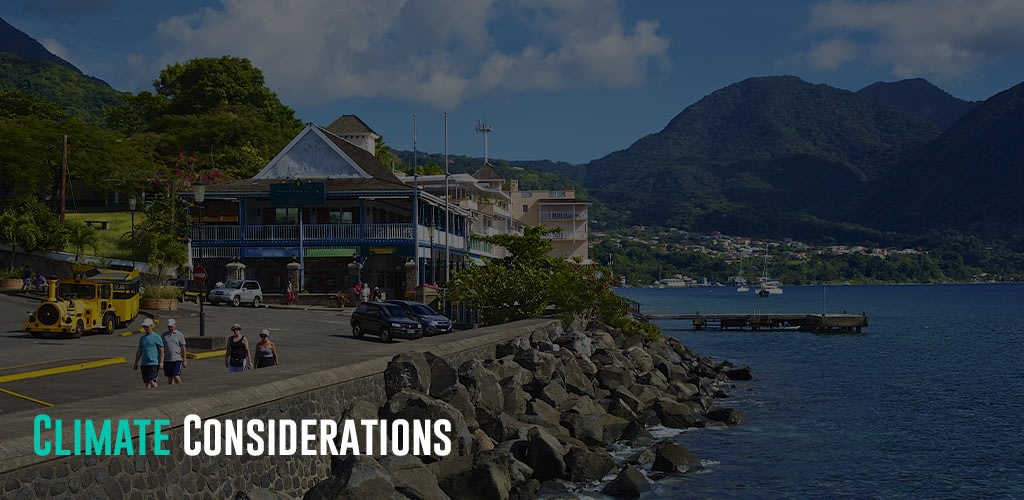
Visitors to Dominica can expect a tropical rainforest climate, with plenty of sunshine interjected by intermittent rainfall. The country experiences a wet and dry season, with the wet season lasting from June to November and the dry season from December to May.
Dominica’s climate is greatly influenced by the trade winds and frequent rainfall, which moderate the temperatures. The average annual temperature on the coast is around 27 °C, while the inland areas are cooler at 25 °C.
Additionally, Dominica is also susceptible to hurricanes from June to November.
Primary Transportation Options
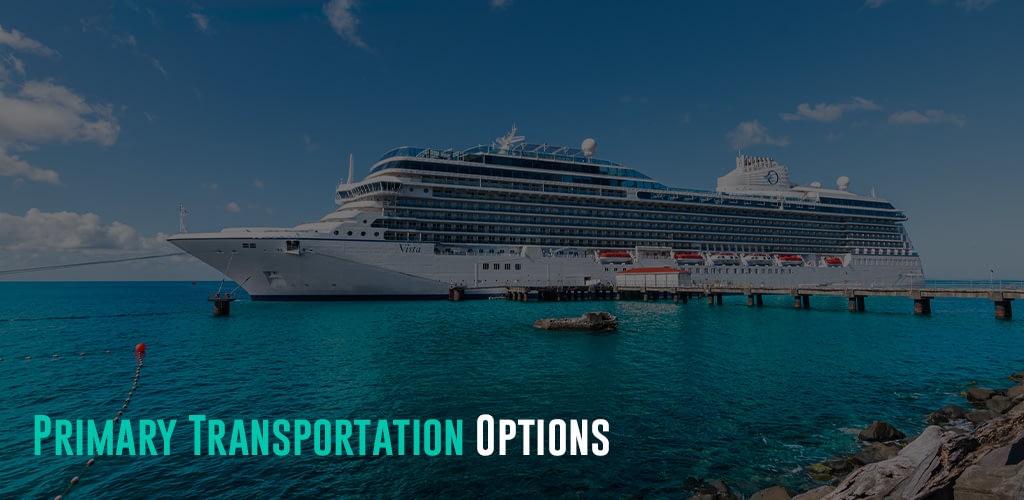
Dominica’s transportation system combines air, sea, and road networks.
Air
Dominica has two airports: Douglas-Charles Airport, formerly Melville Hall Airport, in the northeast, and Canefield Airport, near Roseau, the capital. Douglas-Charles Airport is the primary international airport and serves flights to and from other Caribbean islands and some international destinations.
Despite not having a flag carrier, major international and regional airlines operate in Dominica. American Airlines flies directly from Miami International Airport to Douglas-Charles Airport in Dominica. Travelers from Canada and other parts of the US can also connect through other hubs using Delta, JetBlue, United, Southwest, and Spirit. From Europe, travelers can take Virgin Atlantic, KLM, Air France, and British Airways.
In addition, several regional airlines connect to Dominica from hubs in the Caribbean. These include Caribbean Airlines (the largest network), InterCaribbean Airways, Leeward Island Air Transport (LIAT), WINAIR, Air Sunshine, and Silver Airways.
Cruise and Ferries
Dominica is becoming a favorite cruise ship destination in the Caribbean. The country receives hundreds of thousands of tourist arrivals annually from cruise ships through its main port, the Roseau Cruise Ship Berth. In addition, Woodridge Bay and Cabrits Cruise Ship Berth also serve as berthing ports for cruise ships in Dominica. These ports facilitate tourism and provide a significant source of revenue for the economy. Aside from cruise ships, yachts and sailboats also anchor at these ports.
Due to its island geography, ferries also play a crucial role in connecting Dominica to its neighboring islands. Travelers can quickly get to Dominica from the French islands of Guadeloupe, Martinique, and St. Lucia via the L’Express des Îles ferry service. Moreover, Val Ferry offers service from Guadeloupe via Marie Galante to the northern town of Portsmouth, docking at the historic Cabrits berth.
Car Rental
Hiring a car offers more flexibility, particularly in exploring off-the-beaten paths in Dominica. Visitors can choose among the primary international car rental companies or local rental agencies. Some of the top local rental companies are Laronde, Island Car, Acces, Paradise, and Yadah. Depending on the car type and model, the rental rate starts at $53 for a small vehicle.
To be eligible to hire a vehicle, renters must be between 25 and 65 years old and have two years of driving experience to qualify for a driver’s permit for $12. Also, note that Dominica drives on the left-hand side of the road.
Public Transportation
Public transportation in Dominica primarily consists of privately owned minibusses and vans, which serve as most residents’ primary mode of transport. These minibusses are easily recognizable by their license plates that start with “H” and can seat up to 15 passengers. Moreover, minibusses operate along established routes and are relatively inexpensive, between $0.75 and $4.60, depending on the route. The daytime bus schedule is relatively frequent, but it is not suitable for night travel.
Taxi
Taxis are another reliable and convenient option for getting around Dominica. They can be found at the airports and in Roseau, arranged from most hotels, and are easily identifiable by the letters H, HA, or HB preceding the registration numbers on the number plates. However, taxis in Dominica do not use meters and follow a fixed rate system set by the taxi association. Hence, confirm the fare with the taxi driver to avoid surprises before getting in the car.
Some recommended taxi service operators are Alexis Taxi Services, Mally’s Taxi Service, and Nature Island Taxi Association. Taxi fares start at $11, depending on the route.
Start Trip Planning
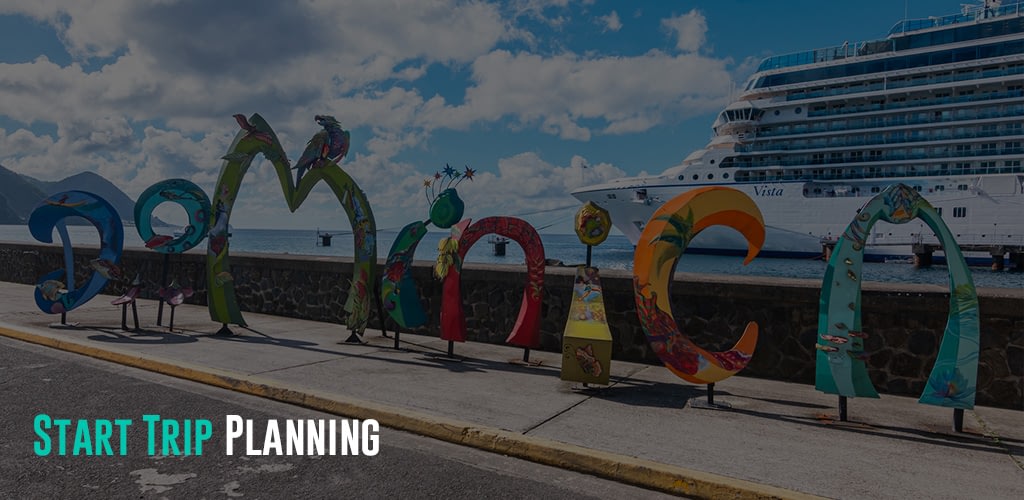
Travel-Wise is made from the ground up to help people travel more, break down the barriers that make it tough to get going, and start your journey as painlessly as possible. Bookmark our other Country Guides to help kick-start your research for future travels. We also offer templated itineraries from our staff and community that help serve as a building block for your trip plans. Alternatively, we also utilize AI to offer a way to generate itinerary ideas. It saves much time just getting you up and running with a template. From there, you can use the trip planner to create your customized itinerary, invite friends and family for collaboration, find others from Travel-Wise to join the trip, book and track important information, journal, and share your experiences at the end or along the way!

